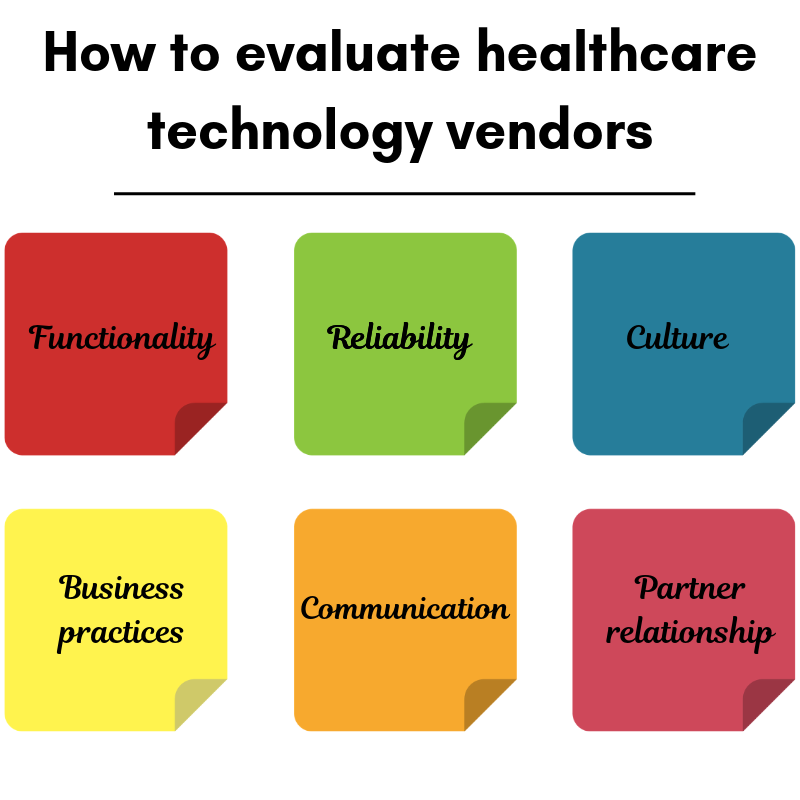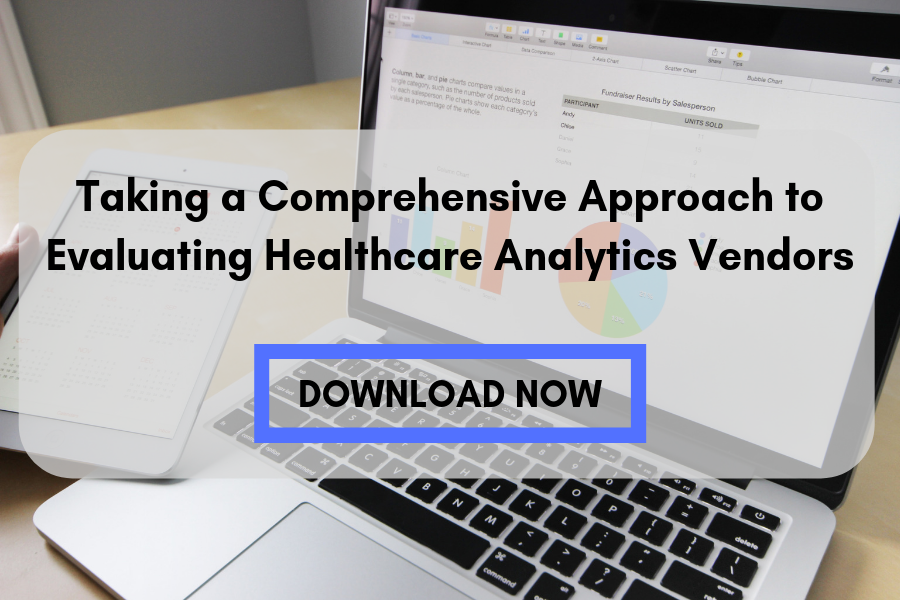According to an Ernst & Young survey, more than 90% of healthcare executives were planning to undertake at least one technical adoption project in 2018, with the majority of initiatives directly related to making better use of data. As a result, providers will be exposed to a number of different sales strategies — and they will need to develop the business savvy to choose vendor partnerships that will lead to the best possible outcome for their organization.
Choosing a healthcare analytics tool is a major decision with long-term implications for the success of any provider group. Every health IT selection process must be considered as one part of an overall business strategy that combines input from clinical, financial, executive, and administrative stakeholders. What are the factors that providers need to consider as they evaluate software vendors? Let’s take a look.
Moving beyond feature-functionality
Health IT tools typically require some degree of customization and optimization before they can meet the customer’s needs, which in turn requires a positive, productive working relationship between the vendor and the client.
In addition to assessing a vendor’s core technology for functionality and reliability, healthcare providers must consider how that vendor’s culture, business practices, and communication style align with their own.
A mismatched vision of the implementation and optimization process can leave both parties frustrated and dissatisfied and result in lower productivity and a reduced return on investment.
In an effort to equip providers with as much information as possible, industry experts such as KLAS Research are highlighting the importance of vetting health IT companies for broad cultural alignment.
In 2019, the respected market research firm added a new scorecard to its Best in KLAS health IT rankings, giving special recognition to vendors whose culture, relationships, and overall value to the client went above and beyond the ordinary.
Vendors that score highly on these consumer satisfaction criteria are more likely to produce better results than the competition, KLAS believes, even if multiple companies offer similar levels of sophistication and functionality in their software platforms.
In a crowded and quickly changing health IT market, healthcare organizations will need to expand their vendor selection processes to include this new set of comprehensive criteria. Taking a more comprehensive view of vendor assessment will allow providers to select an analytics platform that will offer true value across the entire enterprise.

Planning out the journey from vetting to value
The vendor selection process begins with an internal evaluation of clinical, operational, service line, and financial goals, existing skills and resources, and any budgetary parameters related to the initiative at hand.
Organizations must have a clear idea of the staff members involved in the project and the responsibilities that each individual will take on. They must also ensure that these staff members are aligned around shared goals.
Providers should identify all of the stakeholders that will be affected by a new technology and include representatives from each of these areas in a steering committee or technology selection panel.
For example, a surgery service line typically includes physician or surgeon leadership, operational executives, and subject matter experts: the staff members who understand how the organization’s data translates into the actual events that take place in an operating room.
Setting shared expectations to generate long-term benefits
With the number and scope of value-based care arrangements on the rise, provider groups are seeing more pressure to gain visibility into their data assets and apply data-driven insights to the delivery of care.
Succeeding in an increasingly value-based environment requires organizations to embrace more than just a new technology platform. They must also cultivate a new outlook on care delivery that permeates their strategic initiatives.
Vendor partners play an integral role in helping healthcare organizations complete that transformation into data-driven enterprises, and must therefore share in this vision. A technology partnership needs to be a two-way street so that the customer can generate value quickly and address the opportunities for improvement within the care setting.
Conclusion
In a highly active market for healthcare analytics tools, healthcare organizations will need to examine more than a vendor’s technology to develop meaningful partnerships and succeed with value-based care. Before committing to a product or platform, providers should identify and assess several different qualities in a vendor (e.g., company culture, communication style) that directly correlate to client satisfaction.
Ensuring that a vendor aligns well in these key areas will heighten the likelihood of collaborating effectively and maximizing the value of a provider’s data assets. With the right vendor on board, healthcare organizations will have the tools they need to generate and capitalize upon enthusiasm for long-lasting change across the enterprise.
Learn more about the critical criteria in evaluating healthcare technology vendors by downloading our white paper on the topic. In it, you’ll learn more detail about the criteria we discussed above, as well as learn how EvergreenHealth, based in Kirkland, Washington, evaluated analytics vendors and currently uses its partnership with us to drive improved outcomes, including a 58% reduction in antimicrobial treatment days for its patients.
What should you look for in an analytics vendor? Find out here:
Ready for a test drive of our healthcare analytics software?
- Solving Hospital CEOs’ Pressing Challenges With Analytics - April 15, 2024
- Navigating the Wellness Wave: Wine & Spirits Data Strategy - April 9, 2024
- Takeaways from HIMSS24 - March 26, 2024




